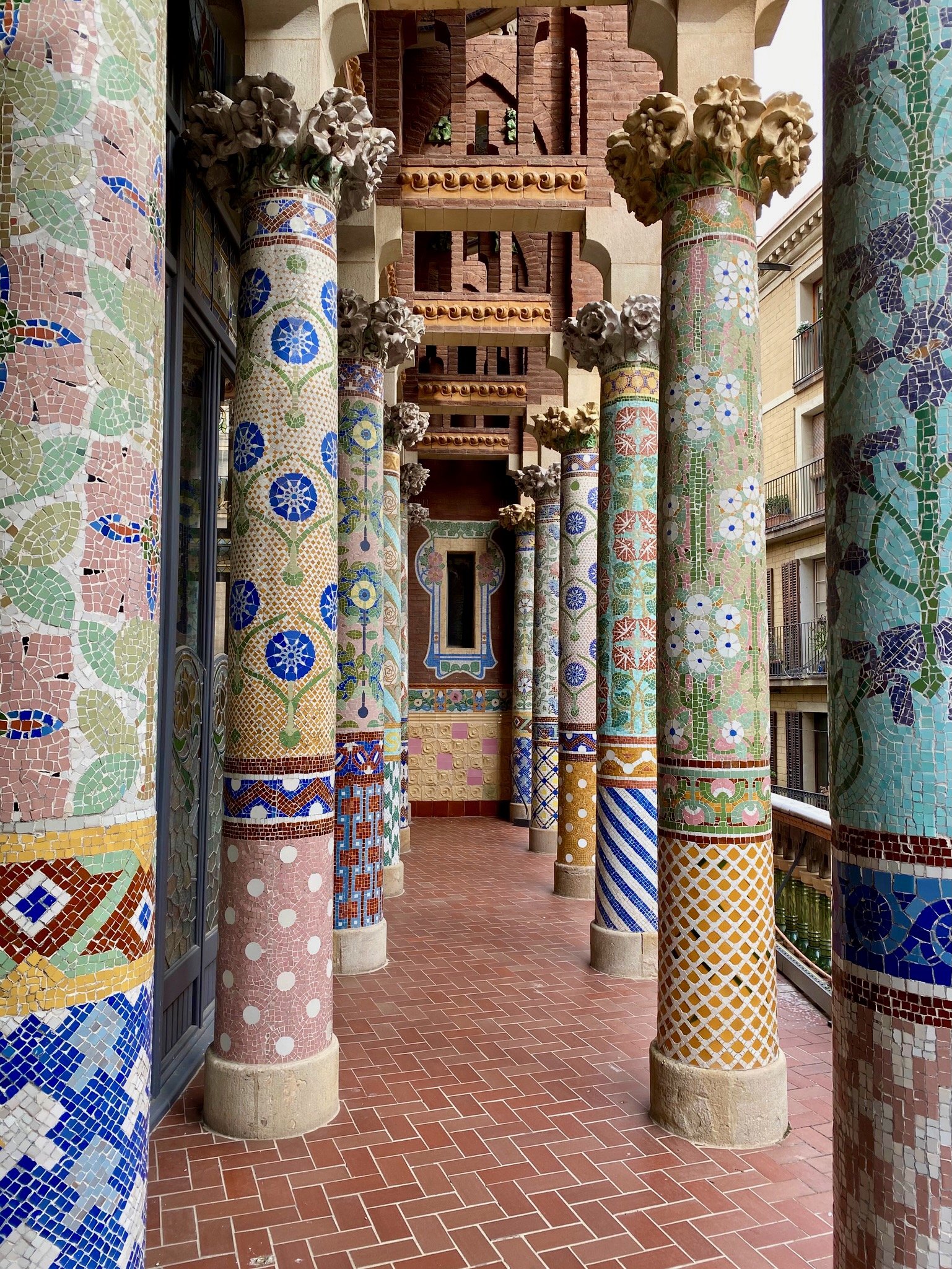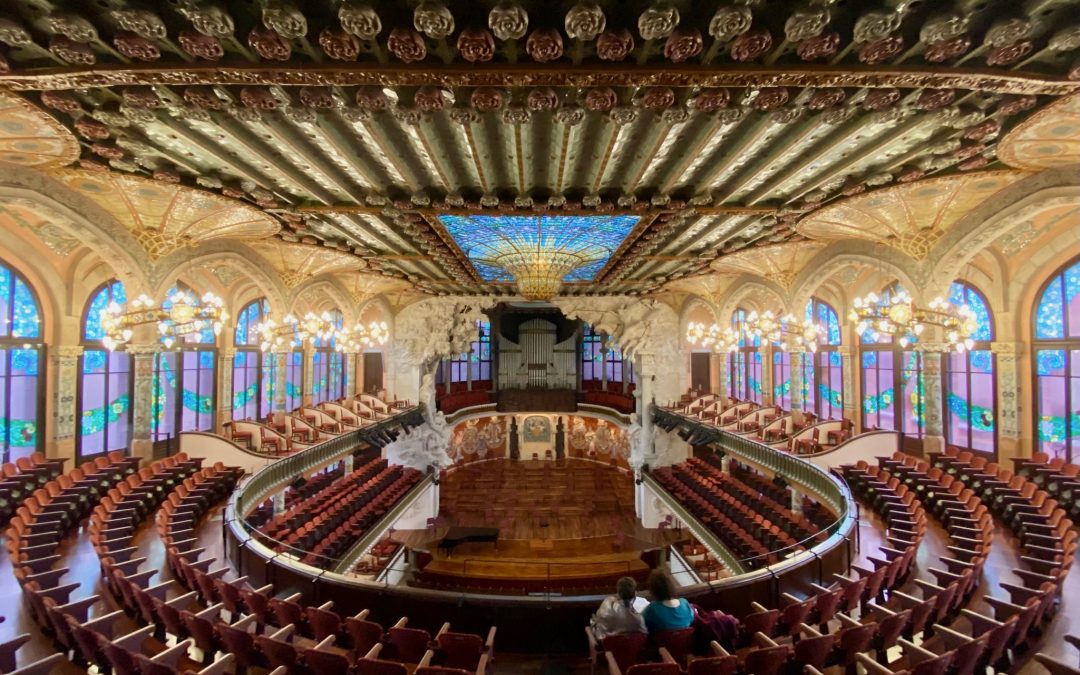Last Updated on July 11, 2024 by Christian Heide
Barcelona’s Palau de la Música Catalana is a truly magnificent concert hall, and it has become one of the most important cultural landmarks in this Spanish city. The building first opened its doors in 1908, and since then it has been home to some of the greatest acts in music history. From classical orchestras to pop stars, the Palau de la Música attracts music lovers from around the world. In this blog post, we will take a deep dive into the history and significance of Palau de la Música Catalana – one of the world’s most beautiful concert halls. We will explore its stunning architecture, its musical legacy and how it continues to awe audiences today.
Construction of the music hall
The construction of the Palau de la Música began in 1905, under the design of architect Lluis Domenech i Montaner. The building is constructed entirely of stone, brick, iron, and stained glass, with no nails used in its construction. The exterior is decorated with reliefs and sculptures by some of the most renowned artists of the time, including Josep Llimona, Joaquim Ros i Bofarull, and Alfonso Cendoya. The interior of the Palau is just as stunning as the exterior, with its magnificent stained glass skylight and grand staircase. The Palau de la Musica was declared a UNESCO World Heritage Site in 1997.
Architecture of the Music hall
The design of the building typifies Catalan modernism, with its curved outlines and dynamic forms dominating over straight lines and static shapes, as well as opulent decoration featuring floral and other natural elements. At the same time, it stands out from other buildings in the style; the design is decidedly rational, taking into consideration the needs of those who use it while incorporating the latest materials and technologies of early 20th century (such as steel framing).
Wealthy citizens of Barcelona asked the architect to design building materials and techniques that symbolized Catalan culture at the time the palace was built. Thus, Domenech i Montaner commissioned and gave creative freedom to a variety of local artisans and craftsmen.


The Façade of the Palau de la Musica
The façade is a beautiful composition of mosaics, ceramic and glass elements. As modernist architects were mostly inspired by nature we see an abundance of flowers when studying the mosaics. Most striking are the columns on the main floor – all covered in mosaics depicting different flowers. Also the balcony with its glass balustrade is a highlight of artisanship. Further up you will encounter the busts of famous composers such as Beethoven and Bach. The top of the façade is crowned with a massive mosaic that looks like a painting. Here we see the Catalan choir that commissioned the construction of the building. They are singing for the rich bourgeoisie of Barcelona. Those families donated money to make such a spectacular building possible.


The interior of Barcelona´s concert hall
The interior of the concert hall itself is breathtaking. The hall is decorated with ceramic roses, beautiful stained glass windows and massive integrated sculptures like Wagner´s Walküre. The absolute masterpiece is the stained glass cupola outshining everything making it the only European concert hall that is only illuminated by natural light during the day. The stained-glass skylight is constructed as an inverted dome and features a wide range of blues and golden tones. For night concerts, a stunning array of chandeliers and other lighting fixtures are used.


Famous concerts in Palau de la Música
There are few concert halls in the world that can rival the Palau de la Música in terms of beauty and grandeur. It is home to the Orfeo Catalana, one of the most prestigious symphony orchestras in Spain. The orchestra performs over 50 concerts per year in the hall.
The concert hall has hosted some of the most famous concerts in history including a performance by legendary violinist Yehudi Menuhin in 1954, as well as concerts by world-renowned opera singers such as Maria Callas and Placido Domingo. More recently, the Palau de la Música has hosted concerts by popular contemporary artists such as Muse, Coldplay, and Adele. The hall has a capacity of 2,200 people.
If you ever have the chance to see a concert at the Palau de la Música, you will be sure to have an unforgettable experience.


Things to do
- If you are visiting Barcelona, a visit to the Palau de la Música should definitely be on your itinerary. Tickets for concerts can be purchased online or at the box office on the day of the performance.
- Guided tours of the building are also available, which provide a fascinating insight into its history and architecture.
- The Barcelona Feeling offers a deeper explanation of the building’s façade and lobby as part of their experiences “Gaudí and Barcelona Legends” or “Explore hidden streets with a friend”. We make detailed stop here and place the building in its architectural and cultural context.

